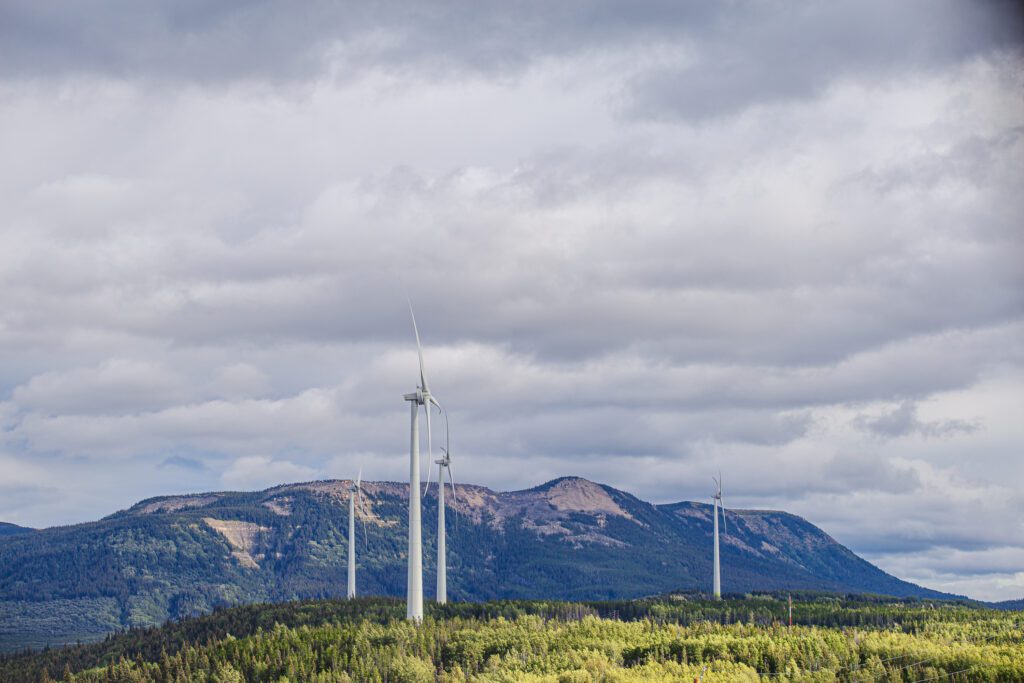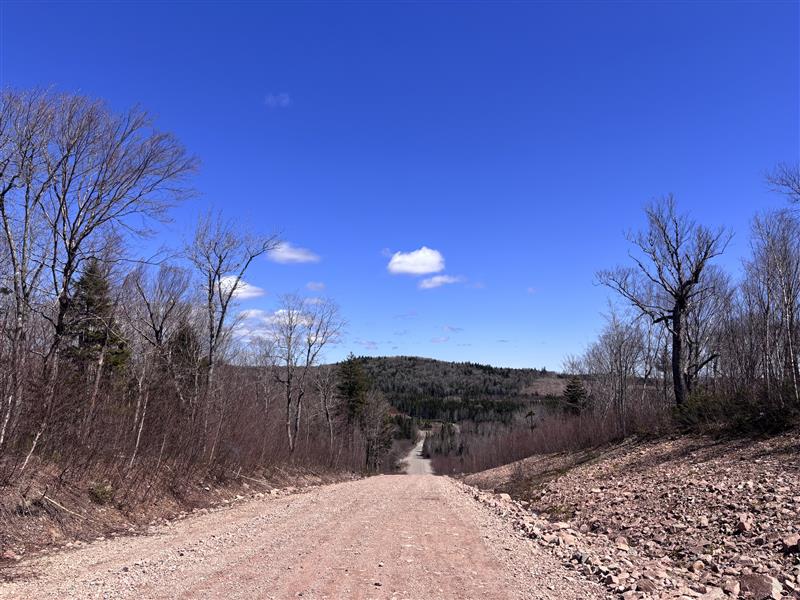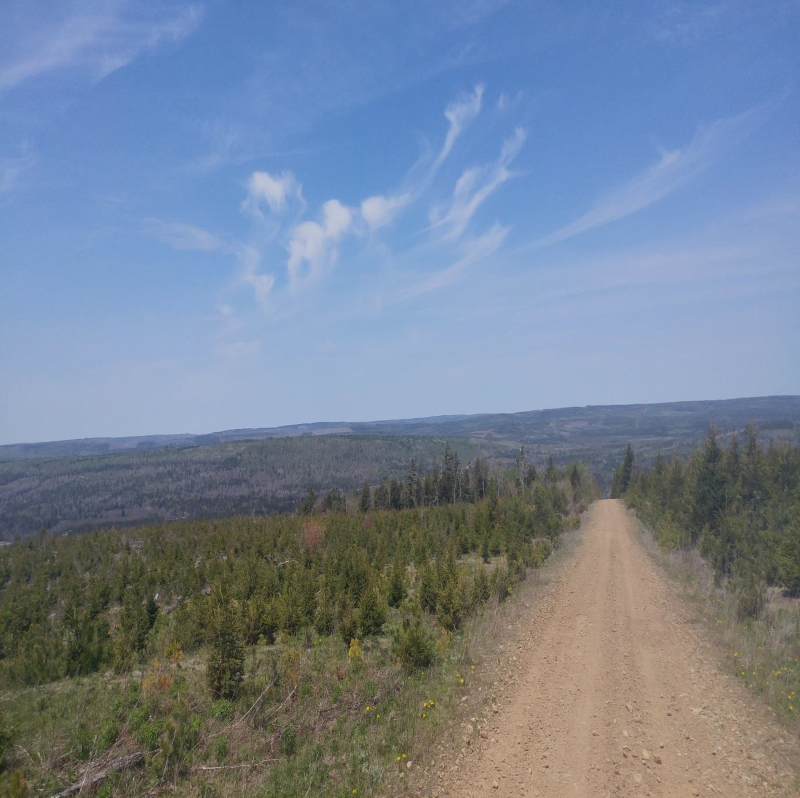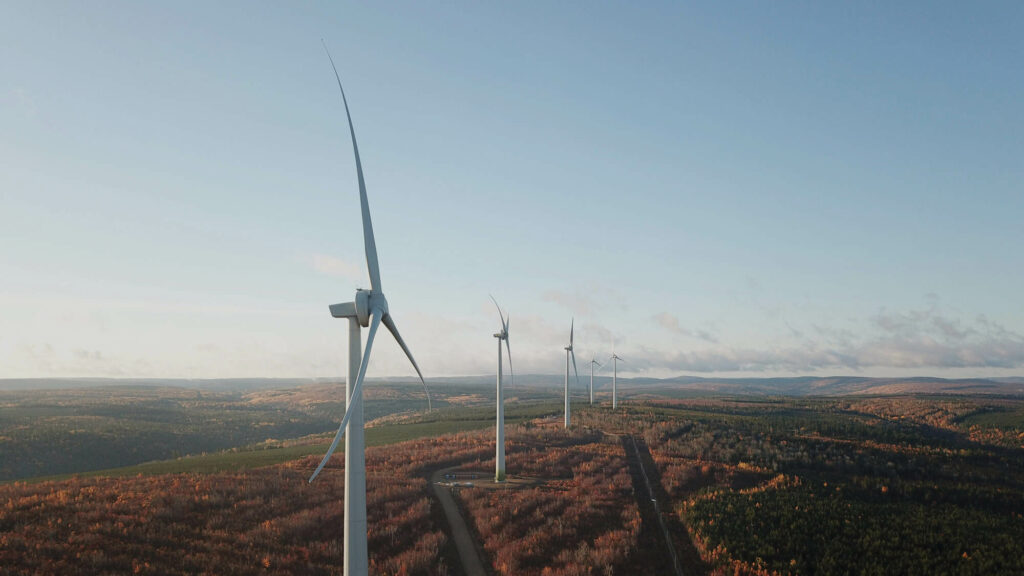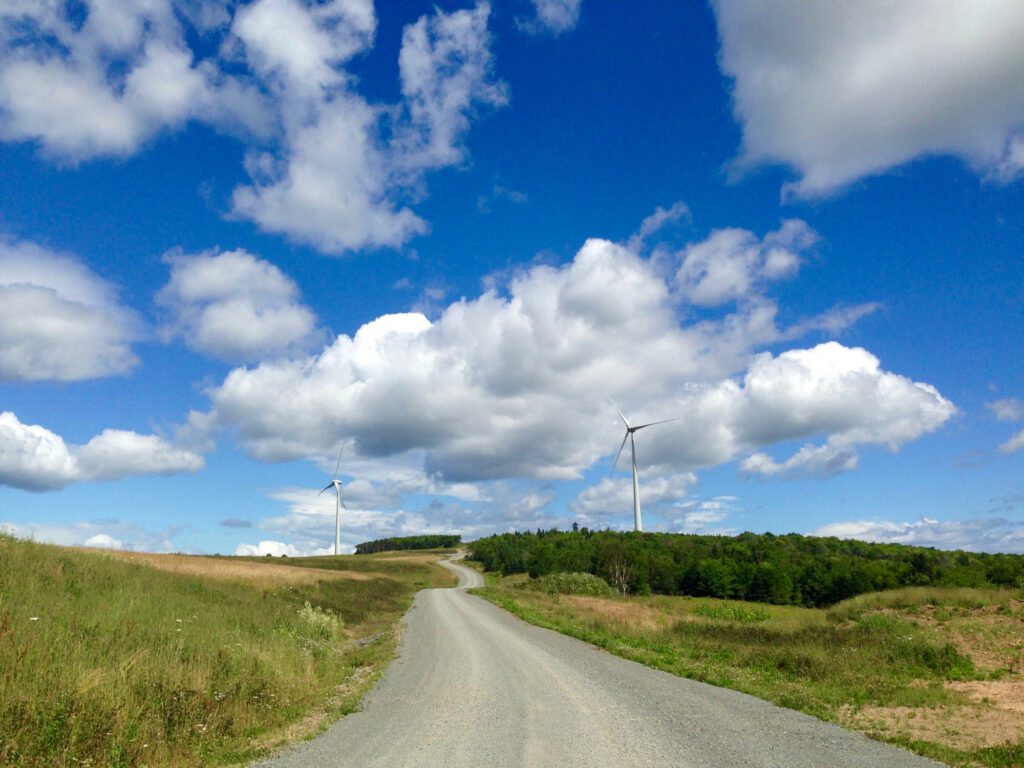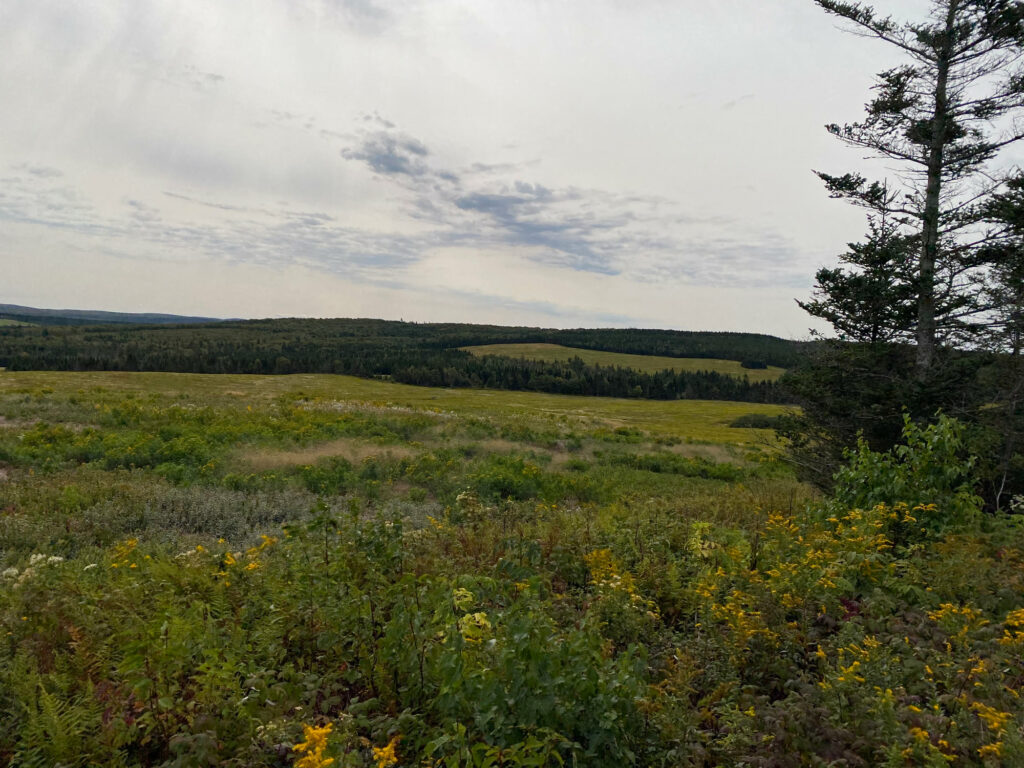Welcome to the official webpage of the Sukunka North Wind Project.
The website has been created to provide information about the proposed project to the community, stakeholders and the First Nations communities of British Columbia.
Mailing List
To join the mailing list for the Sukunka North Wind Project, please click on the link below and fill out your contact information.
About The Project
Saulteau First Nations and Natural Forces are proposing to develop the Sukunka North Wind Project (the Project), located south of Chetwynd. The Project will add new clean, renewable energy to the BC Hydro grid to help meet the growing energy demands in British Columbia.
The proposed Project is located on provincial Crown land approximately 10 km south of Chetwynd and 2.5 km north of the existing operational Sukunka Wind Energy Project. The initial plan for the project consists of up to 10 wind turbines, each with an installed capacity of 7 MW. Turbines of this capacity are each large enough to power approximately 2,500 British Columbia homes. The Project would use some existing access roads and connect to an existing substation and transmission line serving the operational Sukunka Wind Energy Project, reducing the need for additional linear infrastructure.
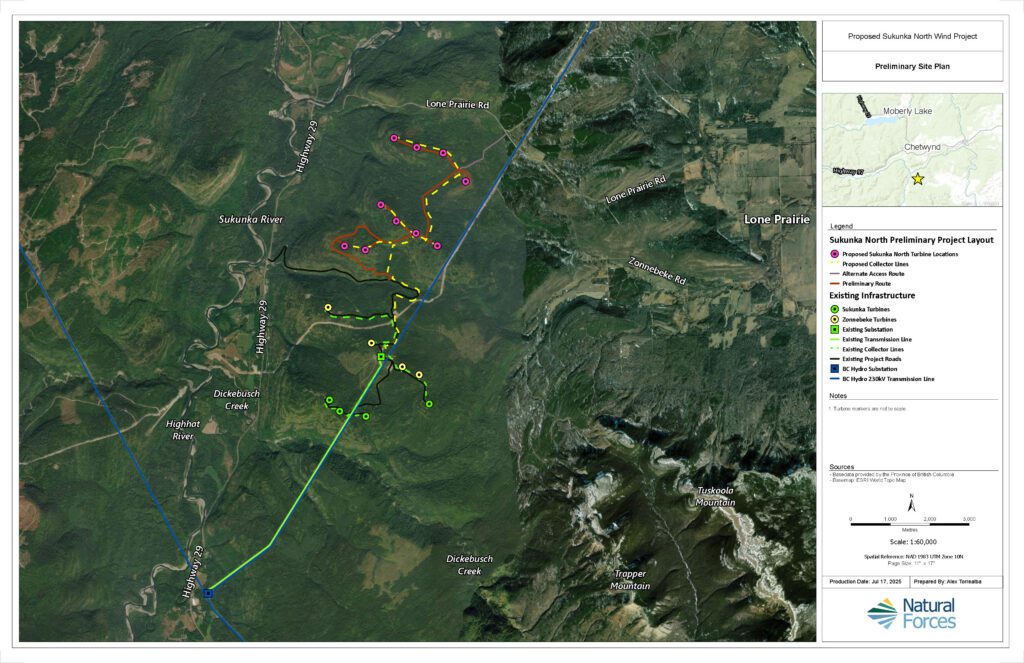

Who is proposing this project?
The Project is being developed by a partnership between Saulteau First Nations and Natural Forces.
Saulteau First Nations


Natural Forces


Natural Forces is an independent power producer that develops, owns, and operates wind, solar, hydro and storage projects. With an extensive portfolio of nearly 300 MW of operational renewable energy projects across Canada and with several ongoing projects at various stages in Ireland and France, the company remains committed to advancing sustainable energy solutions.
Established in 2001, Natural Forces is headquartered in Halifax, Nova Scotia, with regional offices in France and Ireland. The company places a strong emphasis on partnership by working closely with local and Indigenous communities to develop clean energy projects that drive long-term economic and environmental benefits.
As a fully integrated developer and operator of renewable energy assets, Natural Forces manages every stage of project development in-house. This includes site selection, planning, financing, construction, operations, and long-term asset management across various international markets, including Canada, Ireland, and France.
Project Timeline
December 2020 – Wind monitoring campaign begins
November 2024 – Environmental studies begin
March 2025 – Interconnection request approved by BC Hydro
May 2025 – System Impact Study begins with BC Hydro
June 2025 – Natural Forces initiates communications with local community members
July 2025- Saulteau First Nations and Natural Forces hosted a public information session on July 8th at the Chetwynd Public Library.
Why here?
When developing a wind project, identifying the most suitable location and host community is essential for its success. This process involves evaluating four key factors. First, the availability and strength of the wind resource must be assessed to ensure the project can generate sufficient energy. Second, the site’s proximity to existing electrical and civil infrastructure is critical to minimize construction costs and improve efficiency. Third, the environmental sensitivity of the area must be carefully considered to avoid disrupting local ecosystems and wildlife. Finally, socio-economic concerns, including community acceptance, land use compatibility, and potential economic impacts, play a vital role in determining the project’s long-term viability.
Public & Stakeholder Engagement
Natural Forces is committed to engaging with the public, stakeholders, and special interest groups throughout the lifetime of the project. We are both keen to ensure the community understands the project details and is aware of project activities, and to accept input and feedback from community members. Below is information about the major public and stakeholder engagement activities that have taken place to date, including summaries of the information that has been shared at our open houses.
Newsletter
Natural Forces has engaged with, and continues to engage with, stakeholders through a number of avenues, including newsletters. Each of the newsletters circulated to date will be linked below:
June 2025
Information Session
All of the information that was presented at these Information Session can be seen at the links below:
Public Info Session 1 Handout
What is the process?
1
Development
(Current Stage)
- Assess for wind resource
- Survey for environmentally sensitive features through field work and desktop studies and work with regulators to assess any impacts and mitigation
- Optimize turbine location to capture the wind efficiently and minimize impact on sensitive features
- Conduct consultation with First Nations, regulators, and the public
- Apply for road, work, and construction permits
2
Construction
- Clear trees for roads and turbine pads
- Build access roads and pad areas
- Pour the turbine foundation
- Assemble the wind turbine
- Connect to the existing BC Hydro electrical grid
3
Operation
- Commission the wind turbines to start producing power
- Conduct post-construction wildlife monitoring
- Maintain the turbines, roads, and all other infrastructure on site
- Remotely monitor the turbines to ensure safe and efficient operation
4
Decommission or Retrofit
- Assess wind turbines after approximately 40 years
- Decommission wind turbines and reclaim the site to its former state OR
- Receive approvals and permits to retrofit the turbine to continue producing energy
Environmental Studies
In British Columbia, wind project permitting has been managed through the Development Plan process under the Ministry of Water, Land and Resource Stewardship (MWLRS). While the authority for this permitting process for wind projects may transition to the BC Energy Regulator (BCER), the project partners are scoping and completing studies in alignment with the known Development Plan process. To fully assess the potential environmental impacts of the Project, these comprehensive studies include:
- Air quality
- Aquatics, including fish and fish habitat
- Wildlife
- Bird and bat surveys
- Vegetation and habitat surveys
- Sound level and visual assessments
- Heritage and archaeology
- Forestry and agriculture
- Local economy and land use
- Radiocommunication impact assessment
The results of these studies will shape the Project to ensure it is developed responsibly and to mitigate any environmental and socioeconomic impacts.
Sound Levels
The most significant factor when limiting sound impacts to nearby residences is the way wind turbines are sited. As such, the proposed wind turbines have been located more than 1 km from any residence, which is further than the separation distance necessary to limit sound levels from turbine operation.
Based on this siting, Natural Forces assessed the impact of the combined sound levels from the proposed Sukunka North Wind Project and the existing neighboring turbines on nearby homes. This assessment uses industry best practices to model how the sound created by the 18 wind turbines will travel over the landscape.
Results of the modeling show that sound levels potentially experienced by nearby receptors during Project operation will be below the provincial limit of 40 decibels. The attached map visually shows the results of the sound modeling for all existing and proposed turbine locations.
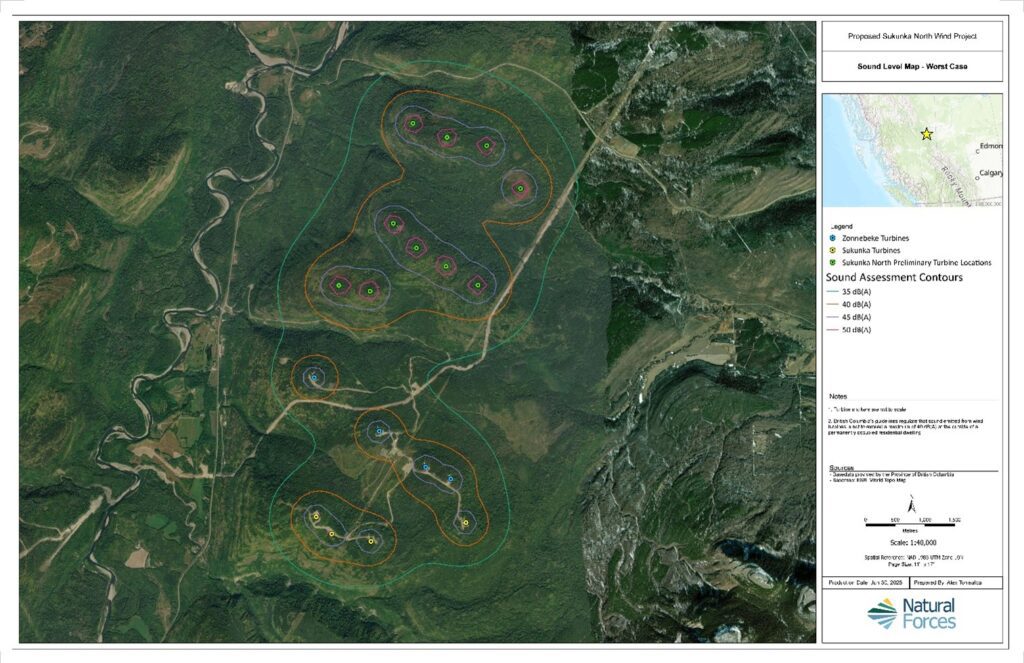

Frequently Asked Questions
Natural Forces undertakes rigorous environmental impact assessments ahead of construction to determine existing environmental sensitivities and potential impacts of the project on the environment. This information will be reviewed by provincial government officials and will be open for public comment.
The proposed turbines will be set back at least 1.0 km from all residences.
A study done by Health Canada in 2014 investigated the health effects of wind turbine noise. This study found that wind turbine noise was not associated with negative health impacts. The summary of these results can be reviewed on the Health Canada Environmental and Workplace Health page and links to additional studies can be found in the following section.
During construction, Natural Forces makes every attempt to hire local contractors, using our in-house construction management company, Natural Forces Construction, to ensure that smaller contractors are able to participate.
Wind turbines have moving parts and therefore some sound can be expected. However, well-designed wind turbines are generally quiet in operation. As wind turbine technology has evolved, the sounds emitted have decreased. The further away you are from a project, the less sound it will make. A typical wind project would have a noise level of between 35-45 decibels from a distance of 350m. For reference, a refrigerator compressor produces 40-45 decibels. Natural Forces follows the minimum standards for distance from residences laid out by local regulations, or a typical minimum distance of 1km.
A sound assessment was conducted to model the combined sound levels of the existing and proposed projects. No residences were identified to be affected by elevated sound levels due to operational wind turbines.
For more information please contact:
Chris Poltarowicz, Project Manager
902-483-9592
sale@nijanienergy.org

